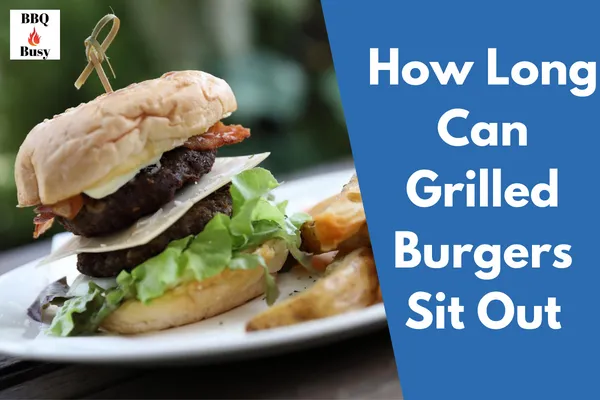
Are you tired of serving up a brisket with soggy bark? Do you find yourself staring at your smoked meat, wondering where it all went wrong? Fear not, my friend. You are not alone in your quest for the perfect crispy and flavorful bark on your brisket.
But why is the bark on your brisket wet in the first place? It can be infuriating to spend hours tending to your smoker, only to end up with a mushy exterior.
There are several reasons why this may be happening, from moisture buildup during cooking to improper ventilation of the smoker.
Luckily, there are solutions that can help you achieve that coveted crispy bark and impress even the most discerning barbecue aficionados. So let’s dive in and figure out how to make sure your next brisket has a bark worthy of bragging rights.
Moisture Buildup During Cooking
You may have noticed some excess moisture building up on the surface of your meat during the cooking process, which can impact its texture and flavor. This is a common issue when cooking brisket, especially when using certain cooking methods like smoking or slow-roasting.
The reason for this buildup is that as the brisket cooks, it releases juices that can get trapped in between the layers of fat and muscle. One way to prevent this from happening is by properly trimming your brisket before cooking.
You want to remove any large pockets of fat or excess tissue that could trap moisture and prevent it from evaporating. Additionally, make sure you are not overcrowding your cooking vessel as this can also lead to too much moisture buildup on the surface of your meat.
By taking these steps, you can help ensure that your bark stays nice and dry while still achieving a tender and flavorful brisket.
Improper Ventilation of the Smoker
Your smoker’s stifled steam is saturating the surface of your succulent meat. When you use a smoker without proper ventilation, the moisture produced by the cooking process has nowhere to go, causing it to condense and settle on your brisket’s bark, creating a wet texture.
There are two main reasons why this might happen. Firstly, if your smoker doesn’t have enough vents or they’re not open wide enough, then there won’t be enough airflow to carry the steam away from the meat. Secondly, if you’ve placed too much meat in your smoker at once or haven’t left enough space between each piece, then this can also cause moisture buildup as there won’t be enough circulation around each piece of meat.
To prevent this from happening in future cooks, make sure that your smoker has adequate ventilation and only cook as much meat as it can handle comfortably.
Not Patting the Brisket Dry Before Cooking
To achieve a perfectly cooked brisket, it’s important to pat it dry before placing it in the smoker.
Wet bark on your brisket could be caused by not removing excess moisture from the surface of the meat before cooking. This is because water can create steam when heated, which can lead to a soggy and unappealing crust.
Patting the brisket dry with paper towels or a clean kitchen cloth will help remove any excess moisture. This step ensures that the rub or seasoning adheres well to the meat and creates a flavorful crust.
So next time you’re getting ready to smoke a brisket, don’t forget to give it a good pat down before putting it in the smoker for that perfect bark.
Using Too Much Sauce or Marinade
Don’t drown your hard work in an excess of sauce or marinade, diluting the flavors and masking the effort put into smoking your meat. While it may be tempting to slather on a generous amount of sauce, this can result in a wet bark on your brisket. Remember that less is often more when it comes to seasoning your meat.
Here are three things to keep in mind when using sauce or marinade on your brisket:
1. Use a light hand when applying any liquids to the surface of the meat.
2. Allow the brisket to rest for at least 10-15 minutes before slicing into it, giving the juices time to redistribute throughout the meat.
3. Consider using a dry rub instead of a marinade or sauce, as this will help create a flavorful crust without adding excess moisture.
Solutions to Achieve Crispy Bark
Achieving a crispy crust on your smoked meat can be a challenge, but there are some simple solutions that will have you biting into perfectly seasoned and textured barbecue.
One solution is to use a dry rub instead of a wet marinade or sauce. A dry rub made of salt, pepper, garlic powder, paprika, and other spices will create a flavorful crust without adding moisture to the meat.
Another solution is to spritz the meat with apple cider vinegar or another liquid every hour during smoking. This helps keep the surface of the brisket moist while still allowing for enough evaporation to form a crispy bark.
Additionally, once your brisket has reached its desired internal temperature (around 195-205°F), remove it from the smoker and let it rest for at least 30 minutes before slicing. This allows the juices to redistribute throughout the meat and prevents excess moisture from ruining your hard-earned bark.
With these simple solutions in mind, you’ll be able to achieve crispy bark on your brisket every time!
Conclusion
So, there you have it! You’ve discovered the reasons why your brisket’s bark is wet.
It all boils down to moisture buildup during cooking, improper ventilation of the smoker, not patting the brisket dry before cooking, and using too much sauce or marinade.
But don’t fret! There are solutions to achieve that crispy bark you’ve been dreaming of.
Make sure to use a dry rub, properly season your meat, and let it rest after cooking. With these tips in mind, you’ll be able to impress your friends and family with a perfectly cooked brisket with a mouth-watering bark that’s crunchy and delicious like potato chips on a sunny day at the beach.



